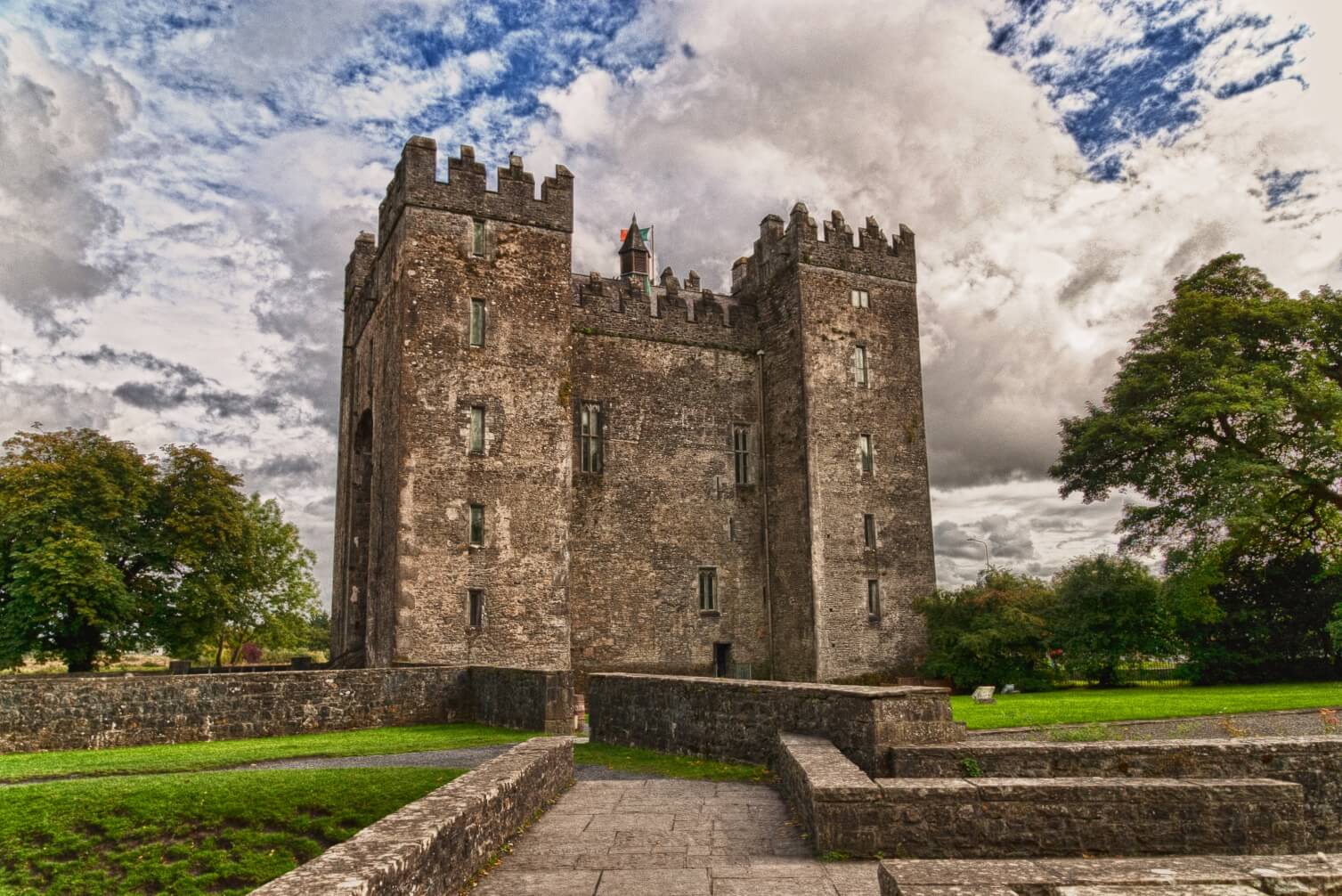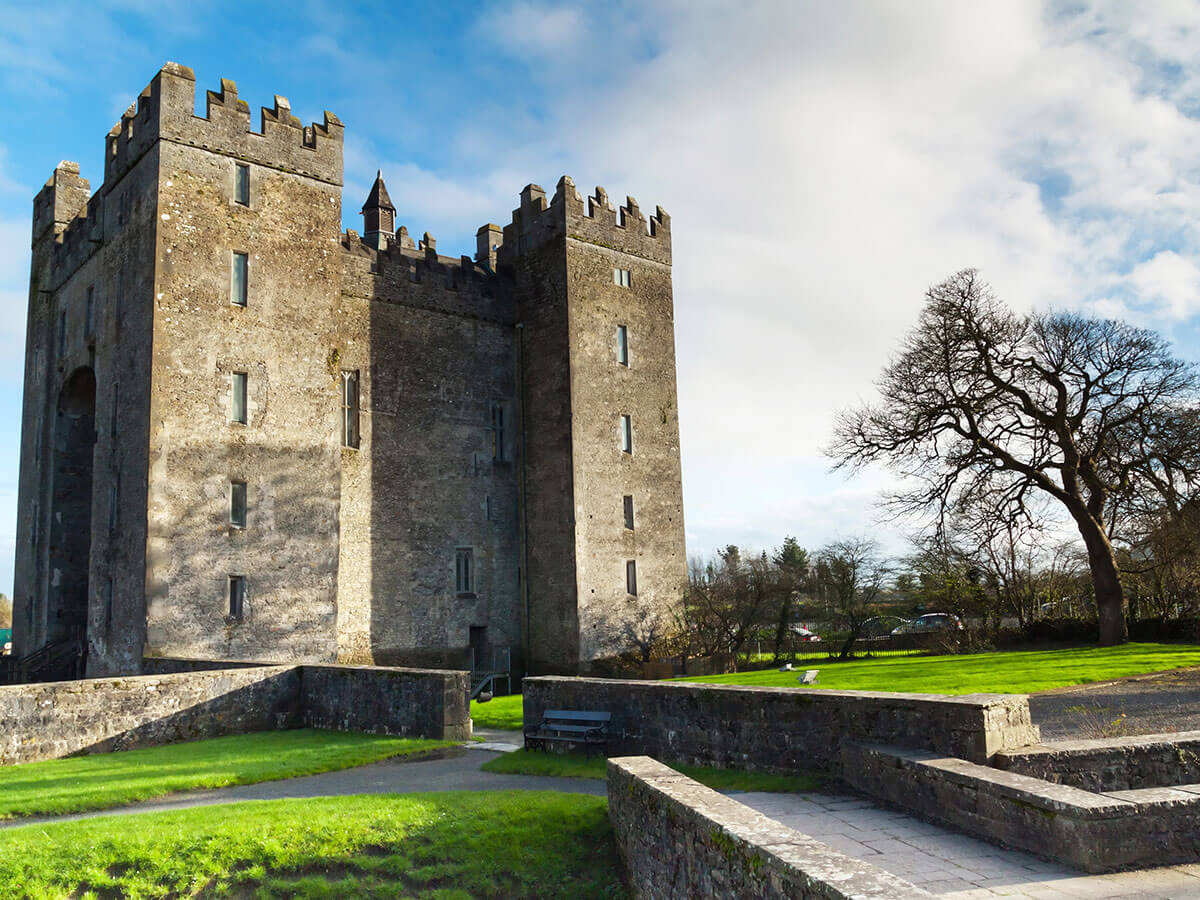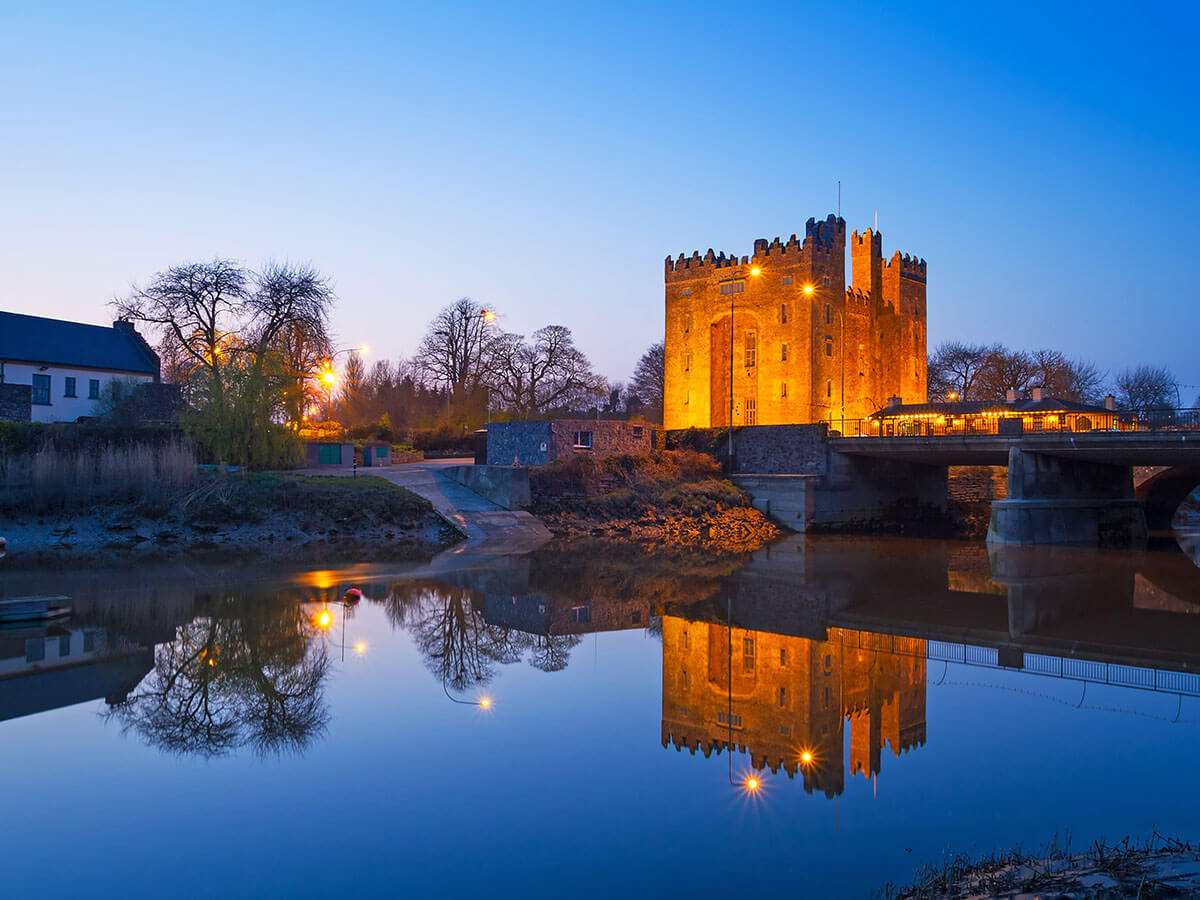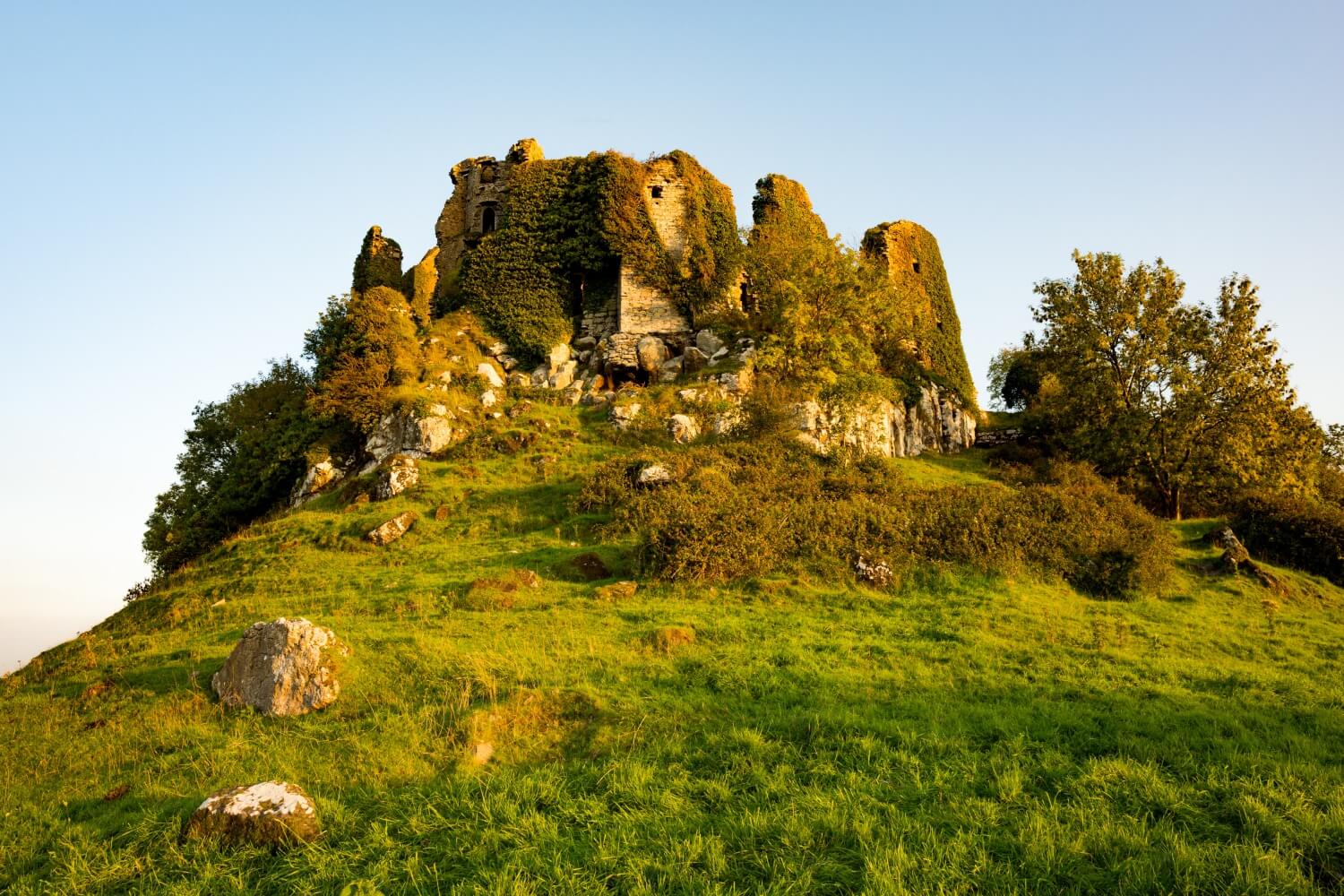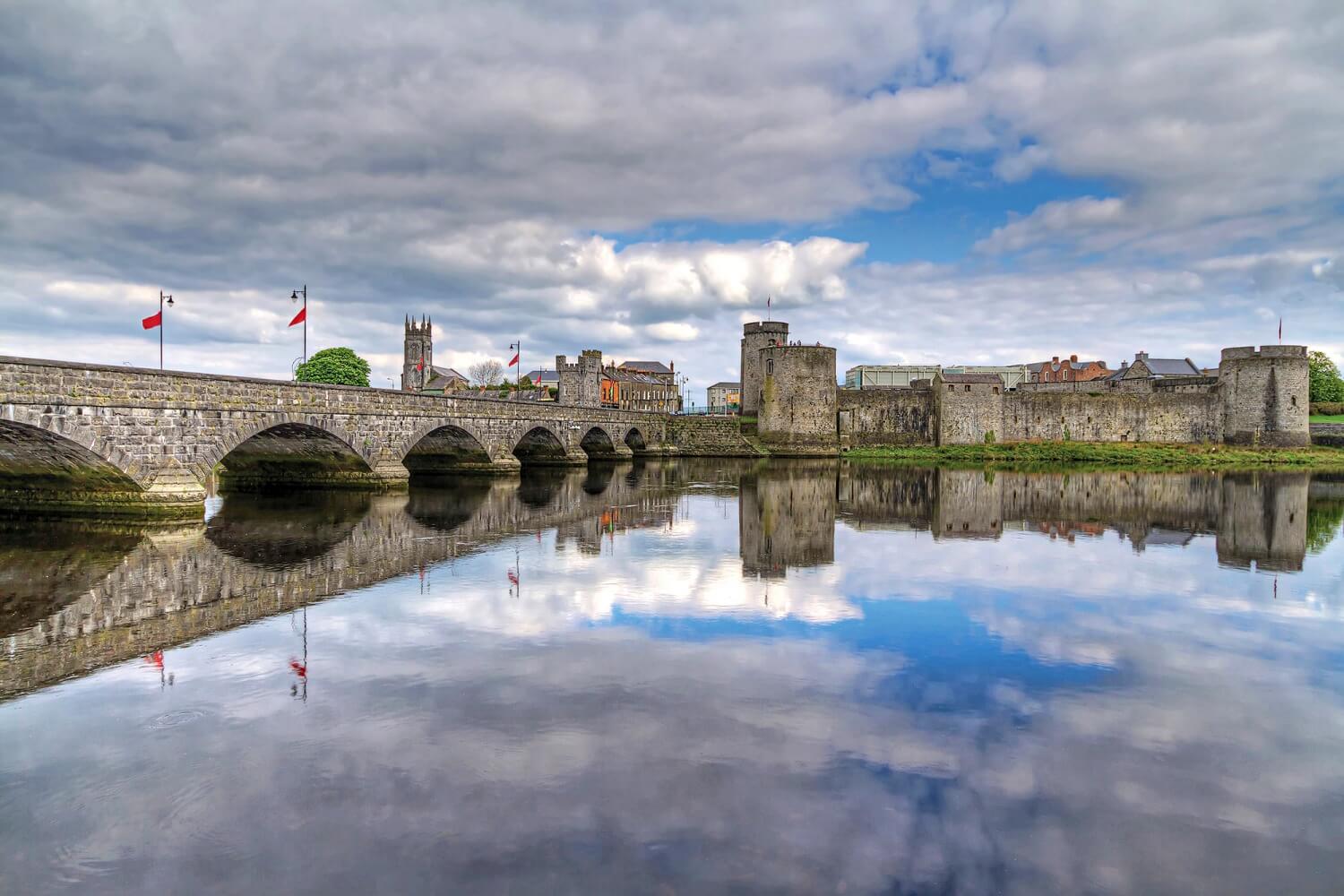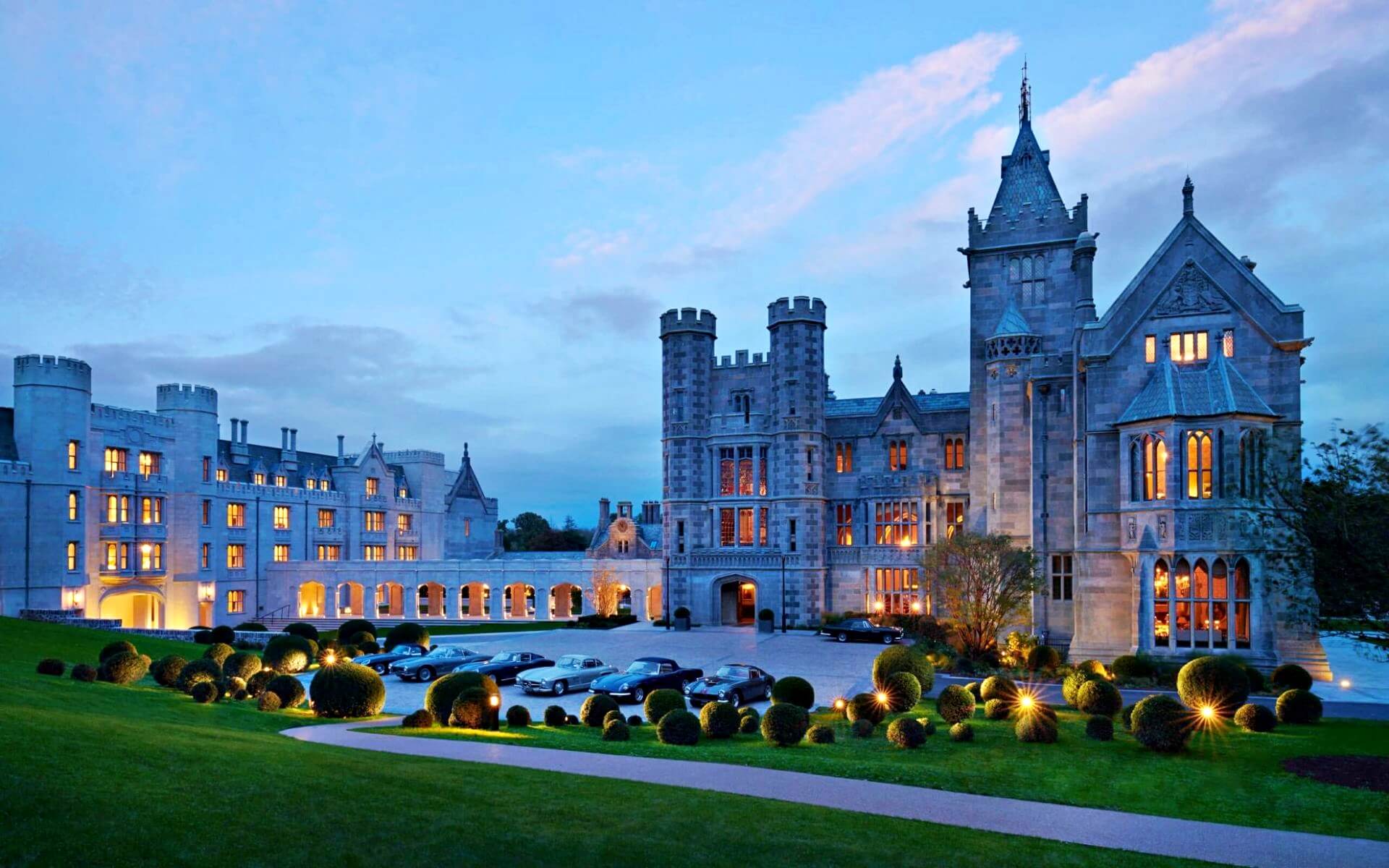Bunratty Castle
Bunratty County Clare Ireland
castle, chateau
Bunratty Castle (Irish: Caisleán Bhun Raithe, meaning ""Castle at the Mouth of the Ratty"") is a large 15th-century tower house in County Clare, Ireland
Previous names
Bunratty Castle
Description
Bunratty Castle (Irish: Caisleán Bhun Raithe, meaning ""Castle at the Mouth of the Ratty"") is a large 15th-century tower house in County Clare, Ireland. It is located in the centre of Bunratty village (Irish: Bun Ráite), by the N18 road between Limerick and Ennis, near Shannon Town and its airport. The castle and the adjoining folk park are run by Shannon Heritage as tourist attractions.
Name
The name Bunratty, Bun Raite (or possibly, Bun na Raite) in Irish, means ""river basin"" of the 'Ratty' river.[2] This river, alongside the castle, flows into the nearby Shannon estuary.[3]
Current structure
The fourth castle, the present structure, was built by the MacNamara family after around 1425. Its builder may have been one Maccon Sioda MacNamara, chieftain of Clann Cuilein (i.e. the MacNamaras). He died before the castle was completed which happened under his son Sean Finn (died in 1467). At around 1500, Bunratty Castle came into the hands of the O'Briens (or O'Brians), the most powerful clan in Munster and later Earls of Thomond. They expanded the site and eventually made it their chief seat, moving it there from Ennis.[4]
In 1558, the castle—now noted as one of the principal strongholds of Thomond—was taken by Thomas Radclyffe, the Lord-Lieutenant of Ireland from Donal O'Brien of Duagh, last King of Thomond (died 1579), and given to Donal's nephew, Connor O'Brien. Donogh O'Brien, Conor's son, may have been the one to move the seat of the family from Clonroad (Ennis) to Bunratty. He made various improvements to the castle including putting a new lead roof on it.[2]
During the Confederate Wars set off by the Irish Rebellion of 1641, Lord Forbes, commanding forces of the English Long Parliament, was allowed by the then Lord Barnabas O'Brien to occupy Bunratty in 1646. Barnabas did not want to commit to either side in the struggle, playing off royalists, rebels and roundheads against each other. He left for England, where he joined King Charles. Defence of the castle, whose position allowed those holding it to blockade maritime access to Limerick (held by the Confederates) and the river Shannon, was in the hands of Rear-Admiral Penn, the father of William Penn, founder of Pennsylvania. After a long siege, the Confederates took the castle. Penn surrendered but was allowed to sail away to Kinsale.[2]
Barnabas O'Brien died in 1657, but had apparently leased out the castle to one ""John Cooper"", possibly the same person married to Máire ní Mahon of Leamaneh Castle, widow of another O'Brien, Conor (died 1651).[2] Bunratty Castle remained property of the O'Briens and in the 1680s the castle was still the principal seat of the Earls of Thomond. In 1712, Henry, the 8th and last Earl of Thomond (1688–1741) sold Bunratty Castle and 472 acres (191 ha) of land to Thomas Amory for £225 and an annual rent of £120. Amory in turn sold the castle to Thomas Studdert who moved in ca. 1720.[5]
The Studdert family left the castle (allowing it to fall into disrepair), to reside in the more comfortable and modern adjacent ""Bunratty House"" they had built in 1804.[5][6] The reasons for the move are bound up in family arguments over the eldest son marrying his first cousin.[citation needed]
For some time in the mid-19th century, the castle was used as a barracks by the Royal Irish Constabulary.[7] In 1894, Bunratty was once again used by the Studdert family, as the seat of Captain Richard Studdert.[7] In the late 19th century, the roof of the Great Hall collapsed.[2]
In 1956, the castle was purchased and restored by the 7th Viscount Gort, with assistance from the Office of Public Works.[5] He reroofed the castle and saved it from ruin. The castle was opened to the public in 1960, sporting furniture, tapestries and works of art dating to around 1600.[4][5]
Today
Today, the castle is a major tourist attraction, along with ""Bunratty Folk Park"". Both the castle and Bunratty House are open to the public. The castle is famous for its medieval banquets, offered since 1963, at which the ""Bunratty Castle Entertainers"" perform today. ""Bunratty Folk Park"" is an open-air museum featuring around 30 buildings, including the Ardcroney Church Of Ireland church, which moved here and reopened in 1998.
External links
Nearby castles
